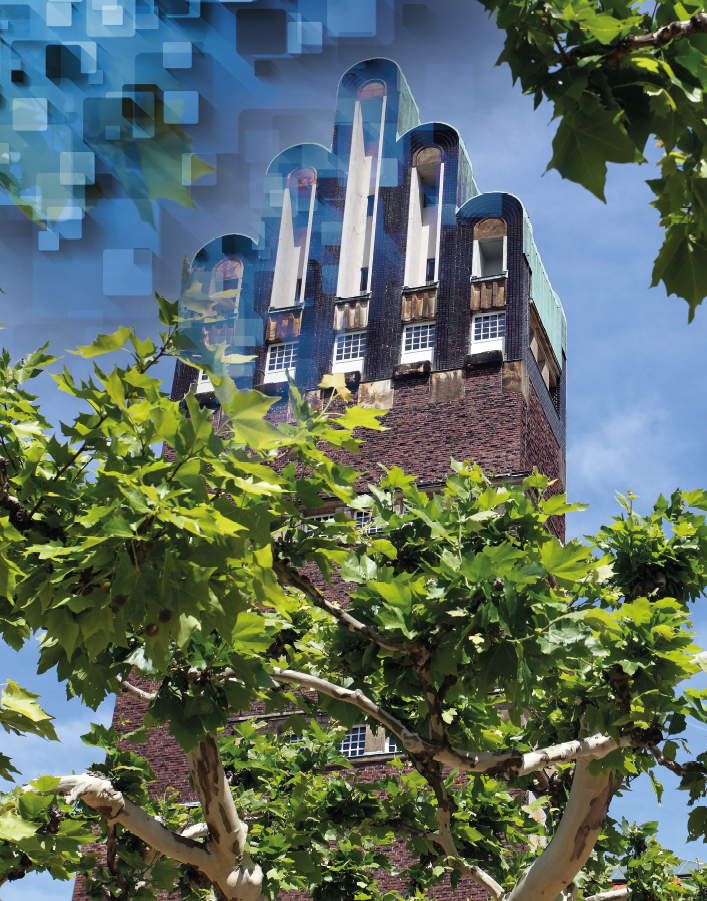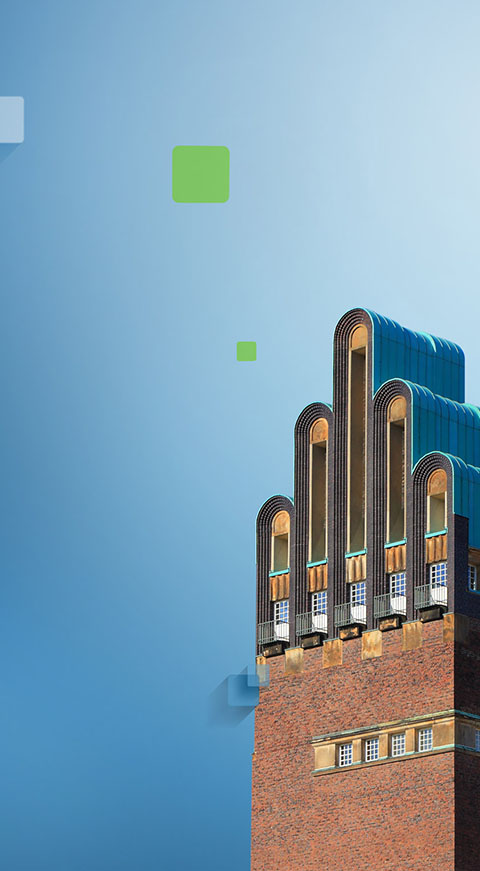
In the online event in March 2021, the Environment/water participatory project of the Smart City Laboratory was presented to the public for the first time. Cluster 2 of the Smart City Laboratory presented a digital platform that could strengthen the commitment of Darmstadt’s citizens to urban greenery. The idea: using 3D visualisations and mapping, for example, everyone should be able to see quickly and easily which young trees need water, shade or something else. Ideally, the residents of Darmstadt could then take action themselves. Because, like many other cities, Darmstadt is struggling with increasing drought and warming.
Creating green spaces can help counteract this trend. While glass facades and concrete act as heat storage, trees and avenues provide cooling shade, especially in summer. And while rainwater rolls off sealed asphalt surfaces, it slowly seeps into the loose soil of beds and cools the areas close to the ground. Professor Jochen Hack, professor of digital environmental planning at the University of Hannover, explained what such a ‘green infrastructure’ can do for Darmstadt and could possibly do even more in the future. According to him, urban greenery has a whole range of benefits. Sustainable urban development will have to take even greater account of biodiversity as an ecosystem and its function as a water reservoir and cooling factor, as well as its value for leisure and health. There are a number of positive effects that speak for a more intense greening of our urban habitats. Only a portion of it remains limited to public green spaces and parks. Much of this is due to the largely underused possibilities on facades, on roofs or in inner courtyards. Private property owners and tenants in particular are therefore invited to be proactive and get involved in the city’s greenery. However, when greening urban areas, technical, organisational and legal issues are also involved. A digital platform can help ensure that relevant information is available at an early stage. However, it must be implemented in close coordination with the municipal authorities. For example, not every seed proves to be a useful contribution and not every free space is easy to use. To support the municipal society’s joint commitment to nature, environment and water in Darmstadt, members of the Smart City Laboratory are currently developing the prototype of a digital platform. In the second part of the Learning Workshop event, the initiators – Dr Michael Kreutzer from Fraunhofer SIT and Dr Joachim Rix from Fraunhofer IGD – explained how such a platform works and could look in the future. Ivan Iovine from Fraunhofer IGD then gave an initial insight into how the map prototype works, as of April 2021. You can see a summary of the event in the video and in the presentations:
Presentation “Darmstadt in 3D” by Dr. Joachim Rix as >PDF<
Presentation Environment and water in Darmstadt by Professor Jochen Hack as >PDF<
About the speakers
As stakeholders in the Smart City Laboratory, the speakers of the evening are committed to its continuous development. In this context, they initiated the Environment/water participatory project and launched the interactive environmental map for Darmstadt. Professor Jochen Hack is professor of digital environmental planning at the University of Hannover. Dr Michael Kreutzer coordinates the Smart City and Smart Region projects at the Fraunhofer Institute for Secure Information Technology SIT. Dr Joachim Rix () and Ivan Iovine are working on interactive 2D and 3D visualisations of geodata at the Fraunhofer Institute for Computer Graphics Research IGD.



